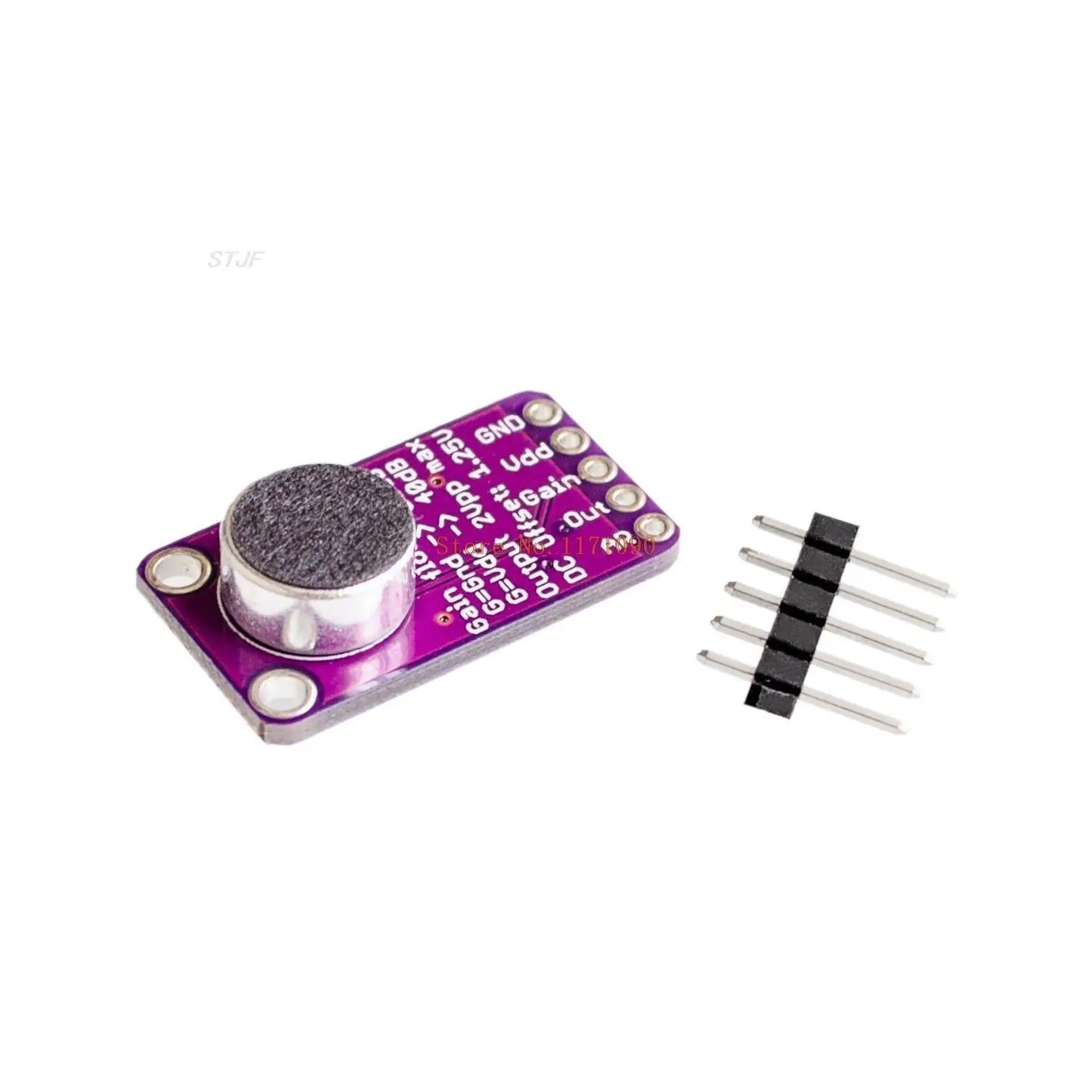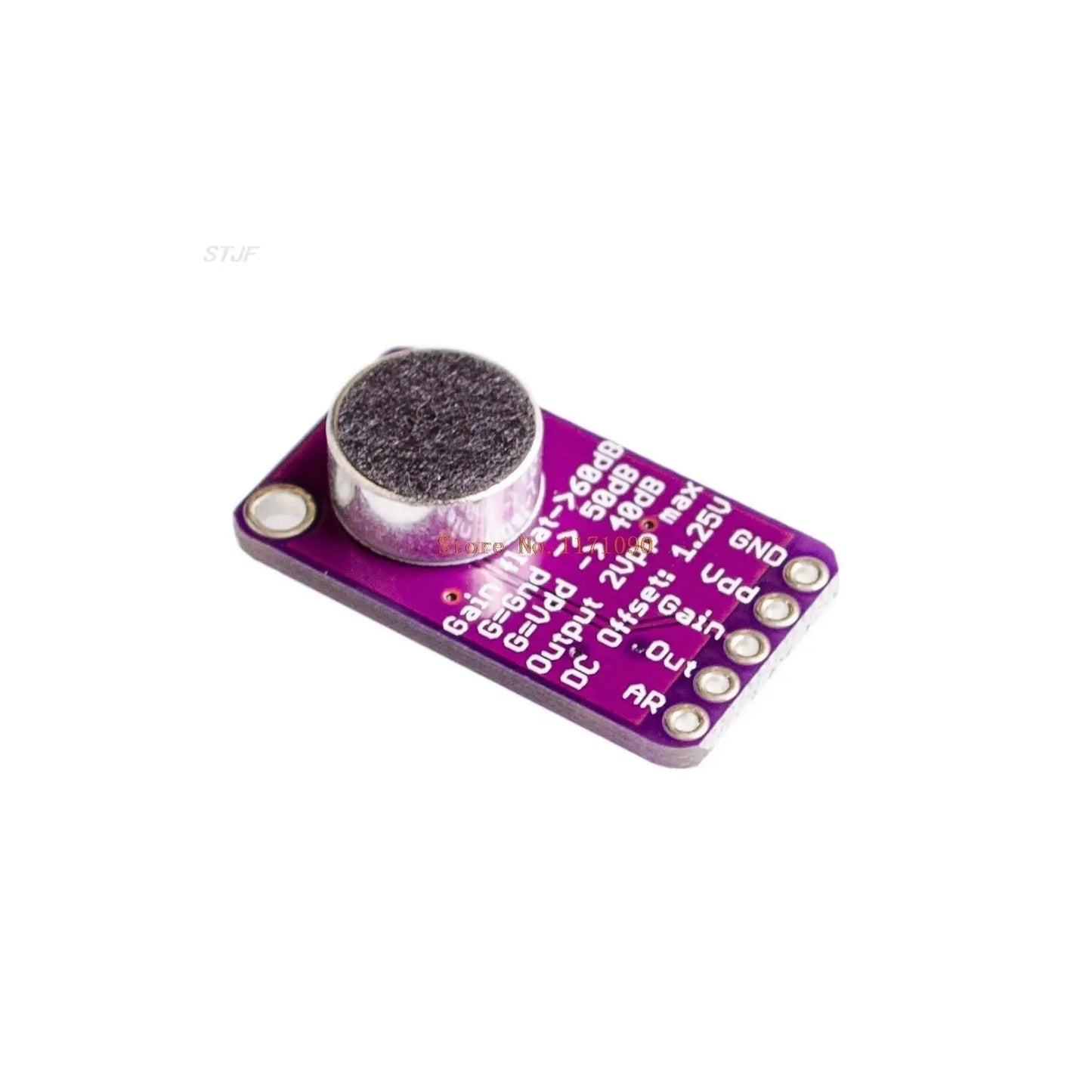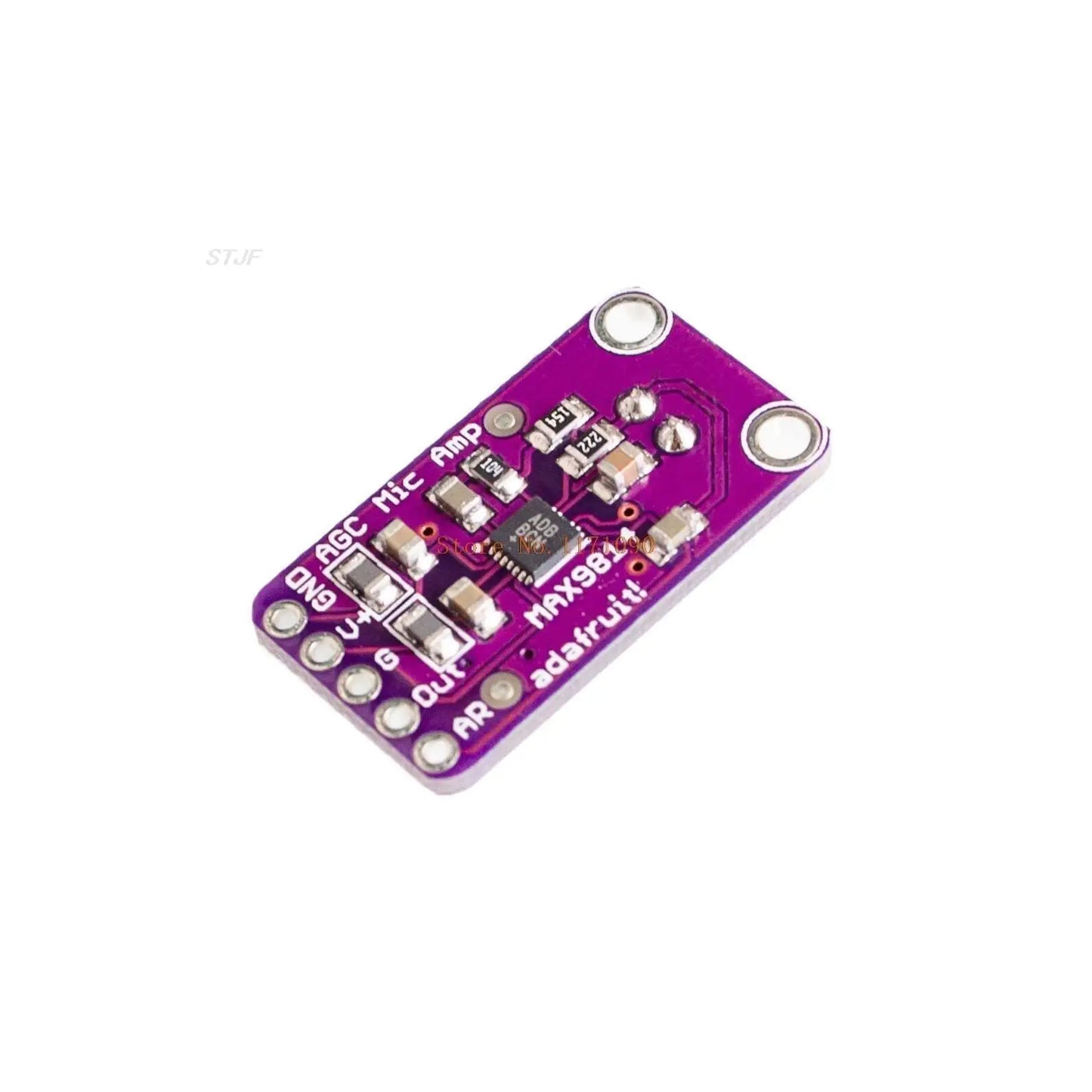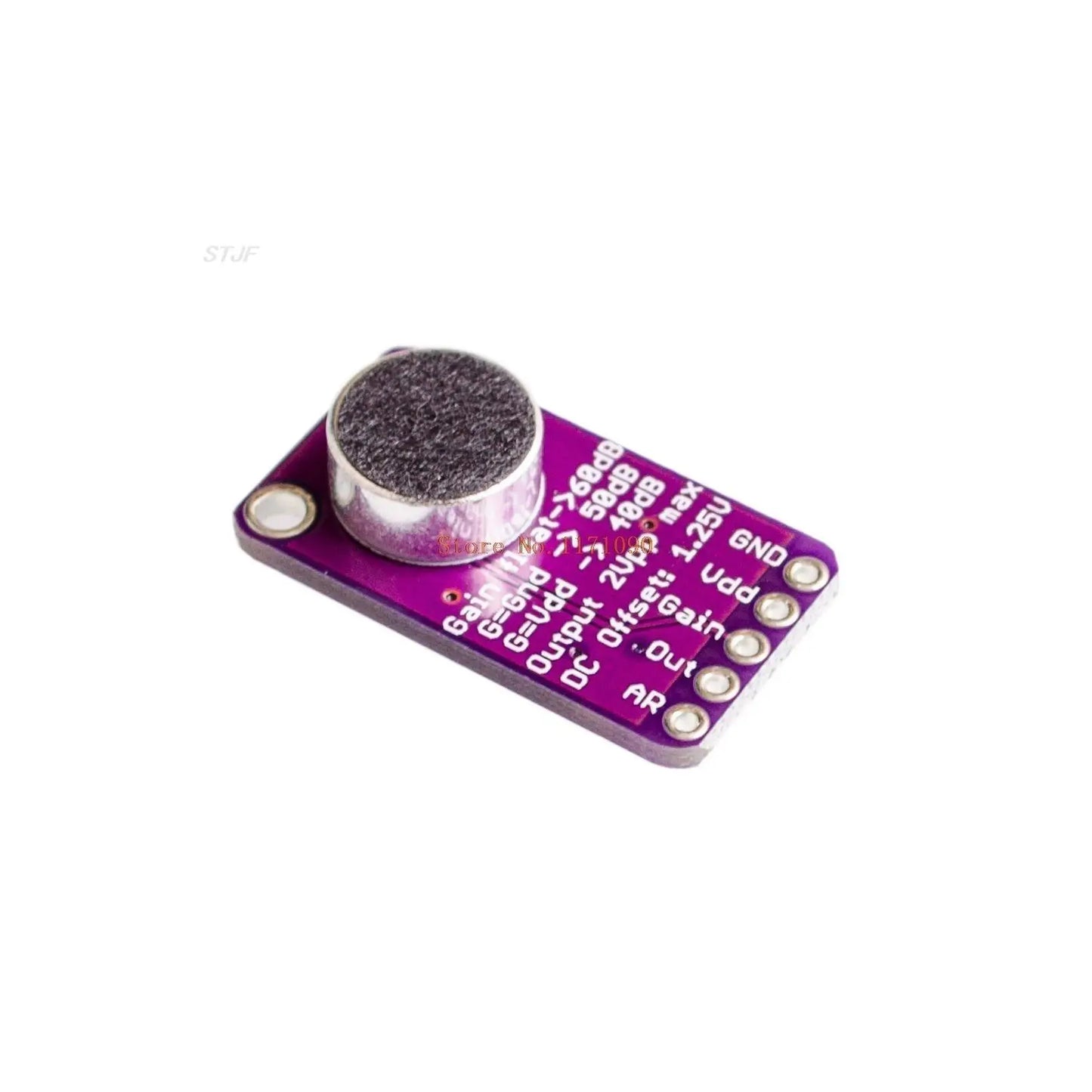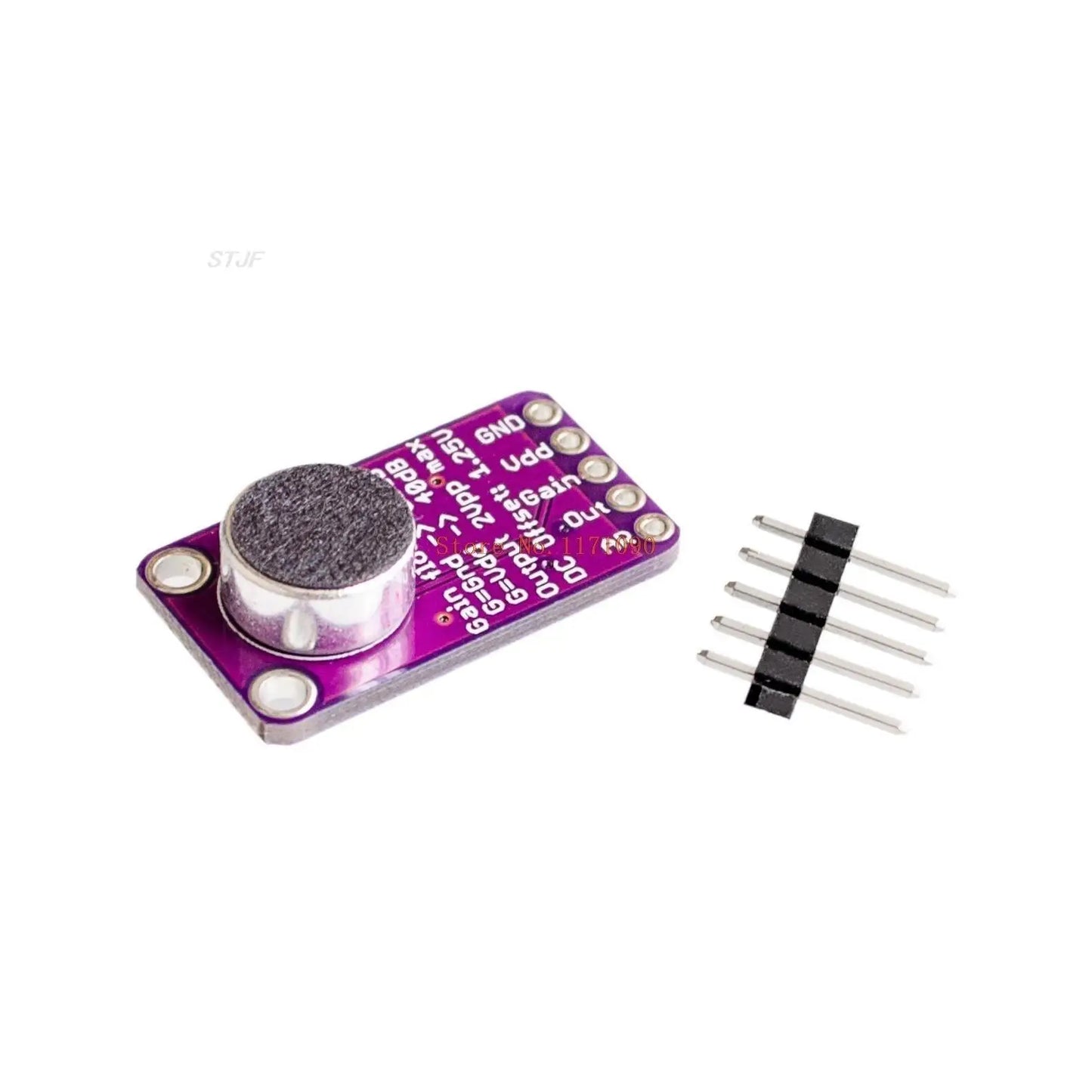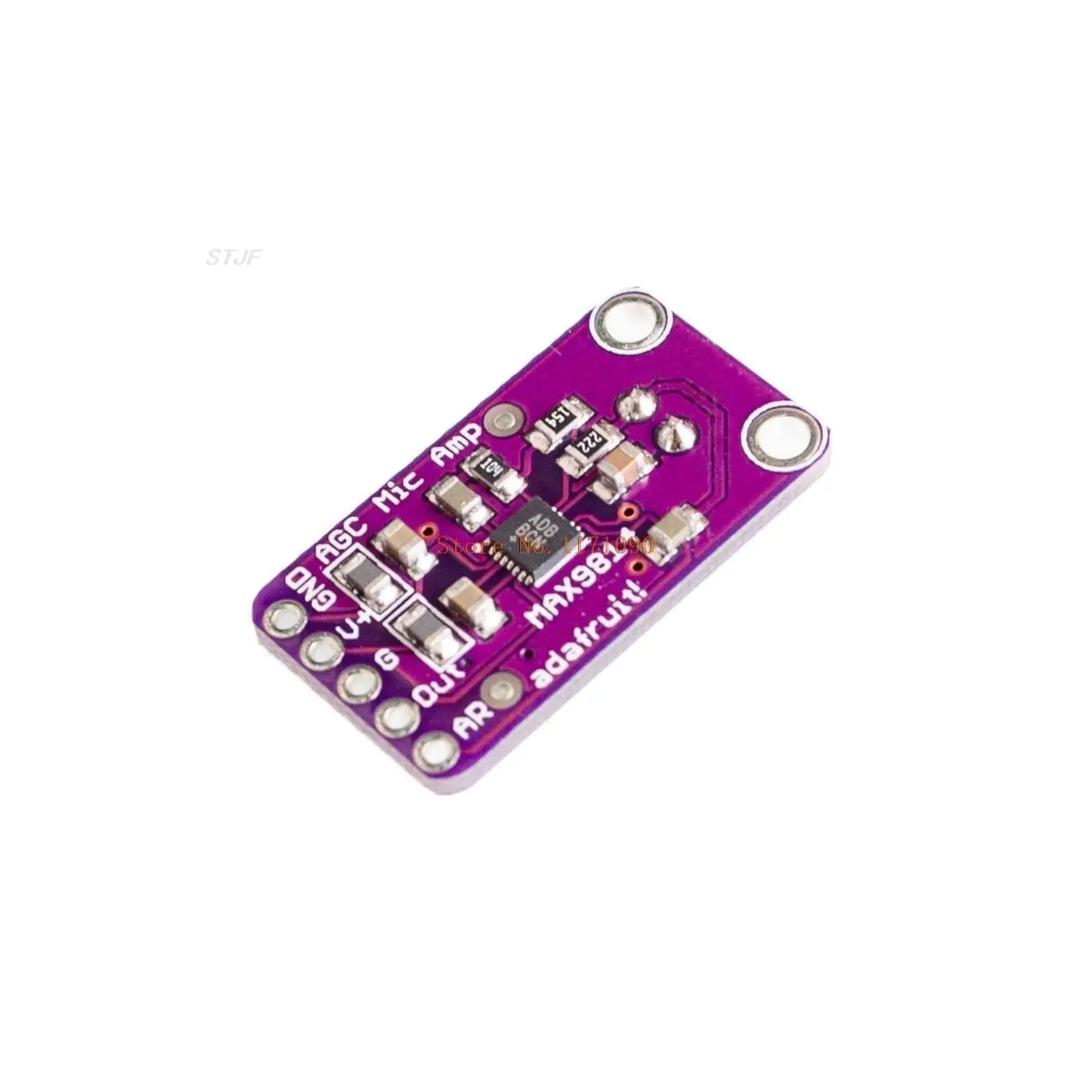Lonten Tech
Custom MAX9814 module Electret Microphone Amplifier Stable Auto Gain Control for arduino
Custom MAX9814 module Electret Microphone Amplifier Stable Auto Gain Control for arduino
Couldn't load pickup availability
The MAX9814 is a low-cost, high-performance microphone amplifier with automatic gain control (AGC) and low-noise microphone bias. Device features a low-noise front-end amplifier, variable gain amplifier (VGA), output amplifier, microphone bias voltage generator and AGC control circuit
Specifications:
Supply Voltage: 2.7v-5.5v @ 3mA current
Output: 2Vpp on 1.25V bias
Frequency Response: 20Hz - 20 KHz
Programmable Attack and Release Ratio
Automatic gain, selectable max from 40dB, 50dB or 60dB
Low Input-Referred Noise Density of 30nV /
Low THD: 0.04% (typ)
Automatic Gain Control (AGC)
3 gain setting (40dB, 50dB, 60dB)
Programmable operation time
Programmable operation and release time than
2.7V to 5.5V supply voltage range
Low input noise density 30nV /
Low THD: 0.04% (typ)
Low-Power Shutdown Mode
Built-2V low-noise microphone bias
Space-saving 14-pin TDFN (3mm x 3mm) Package
-40 ° C to + 85 ° C extended temperature range

Description: Add an ear to your project with this well-designed electret microphone amplifier. This fully assembled and tested board comes with a 20-20KHz electret microphone soldered on. For the amplification, we use the Maxim MAX4466, an op-amp specifically designed for this delicate task!
The amplifier has excellent power supply noise rejection, so this amplifier sounds really good and isn't nearly as noisy or scratchy as other mic amp breakouts we've tried!
This breakout is best used for projects such as voice changers, o recordingmpling, and o-reactive projects that use FFT. On the back, we include a small trimmer pot to adjust the gain. You can set the gain from 25x to 125x.
That's down to be about 200mVpp (for normal speaking volume about 6 inch away) which is good for attaching to something that expects'line level'input without clipping, or up to about 1Vpp, perfect for reading from a microcontroller ADC. The output is rail-to-rail so if the sounds gets loud, the output can go up to 5Vpp!
Using it is simple:
Connect GND to ground, VCC to 2.4-5VDC.
For the best performance, use the "quietest" supply available (on an for Arduino, this would be the 3.3V supply).
The o waveform will come out of the OUT pin. The output will have a DC bias of VCC/2 so when its
perfectly quiet, the voltage will be a steady VCC/2 volts (it is DC coupled). If the o equipment you're using requires AC coupled o, place a 100uF capacitor between the output pin and the input of your device. If you're connecting to an o amplifier that has differential inputs or includes decoupling capacitors, the 100uF cap is not required.
The output pin is not designed to drive speakers or anything but the smallest in-ear headphones- you'll need an o amplifier (such as 3.7W stereo amp) if you want to connect the amp directly to speakers. If you're connecting to a microcontroller pin, you don't need an amplifier or decoupling capacitor - connect the OUT pin directly to the microcontroller ADC pin.
For o-reactive projects, we suggest using an FFT driver library which can take the o input and'translate'it into frequencies.
Condition: New
Type: Other
Color: purple
Material: PC + Metal
Package Contents:
1 * microphone amplifier Broad
Only the above package content, other products are not included.
Note: Light shooting and different displays may cause the color of the item in the picture a little different from the real thing. The measurement allowed error is +/- 1-3cm.


Share
